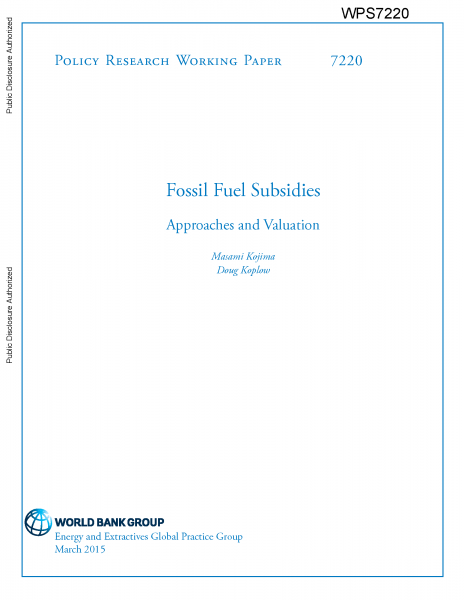I'm happy to announce the release of Fossil Fuel Subsidies: Approaches and Valuation, a paper I wrote with Masami Kojima at the Bank. Masami has written about fossil fuels for many years, often focusing on the functioning of the price mechanism in oil markets.
The working paper takes a deep dive into the main subsidy measurement approaches used to estimate global subsidies to fossil fuels -- including estimates produced by the IEA, IMF, OECD, and the World Bank. We look at the many challenges regarding data acquisition and valuation, how these challenges are likely to affect reported estimates, and important factors that contribute to large differences between global estimates.
Recognizing that available budgets to track and value fossil fuel subsidies are always limited, we also identify some promising options for increased institutional cooperation going forward. These initiatives would broaden the informational base on fossil fuel subsidies overall, and help to standardize subsidy measurement and key data inputs.
Cross-institutional collaboration is already growing, and key staff from all of the institutions we looked at graciously provided their time to review drafts of our paper and to contribute their ideas for future improvements. It is my hope that this trend that will continue to accelerate in the years ahead.



